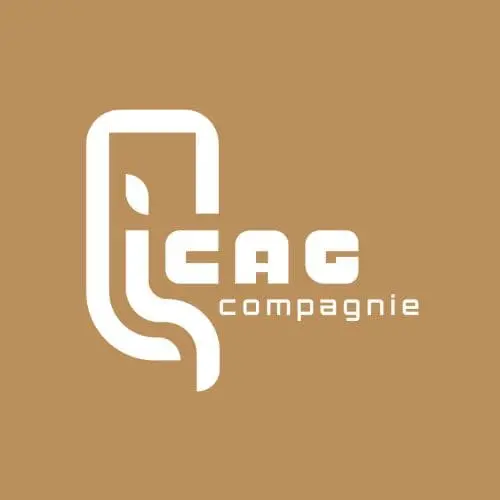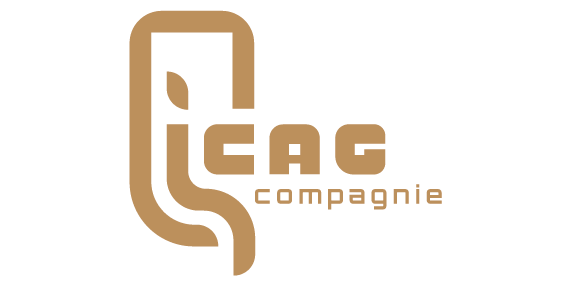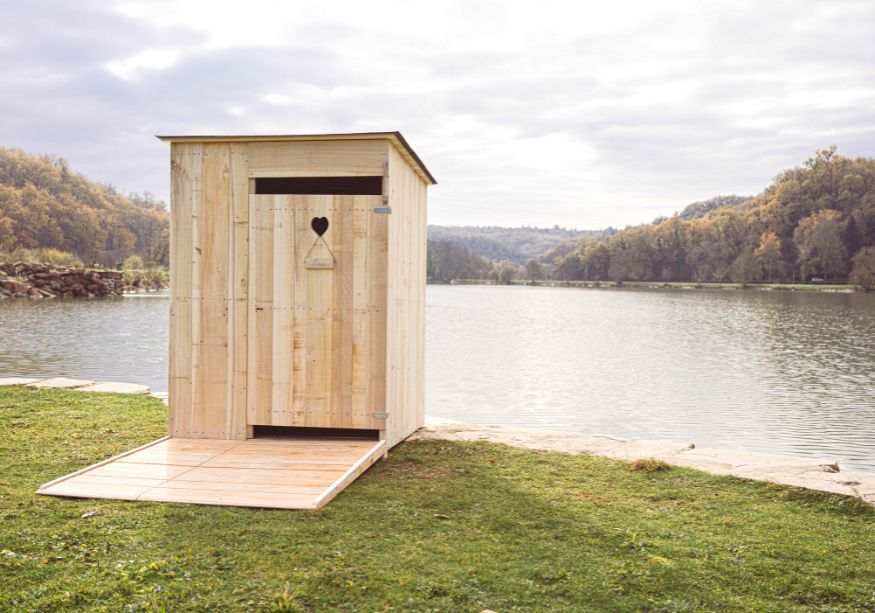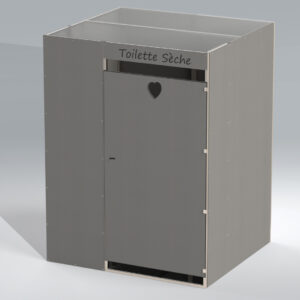Whether for economic, practical, or ecological reasons, dry toilets, whether of the litter, separation, or vermicomposting type, are becoming more popular and widespread.
Here’s a brief overview of dry toilets in France and around the world:
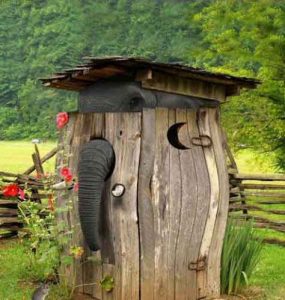
Cabane toilette sèche éléphant.
Even though it’s currently impossible to know the exact number of dry toilet users in France, Europe, or the world, surveys conducted in 2010 provide us with some figures. They allow us to observe the diversity of users and uses of dry toilets while we await further studies.
Here are some examples:
Dry Toilets in Europe and Worldwide
In Finland, dry toilets are the primary technique used in second homes (around 500,000 in 2010). In Denmark, several eco-villages are equipped with dry toilets. In Norway, dry toilets are also used in summer cabins, as is the case in Sweden and Finland.
In Germany, over 30,000 dry toilets are in use. Family gardens and several ecological housing developments have dry toilets in buildings ranging from 3 to 4 stories.
Outside of these countries, dry toilets remain a relatively niche and lesser-known technique in Europe, such as in England and Spain.
Some research outside of Europe has shown that dry toilets are relatively well-developed in the United States and Australia.
Regarding “poor” or “developing” countries, as well as countries without running water, dry toilets are likely used. However, their census is difficult, if not impossible. It’s important not to confuse a simple hole in nature with dry toilets with litter.
Dry Toilets in France
The simplicity of installation and its very low cost make litter-based dry toilets the most common type of dry toilet in France.
It was estimated that between 4,000 and 8,000 households (in 2010) were using a dry toilet on a daily basis.
Until the publication of the decree on September 7, 2009, dry toilets were not a recognized and regulated system in France.
The association “EMPREINTE” conducted a survey with 1,712 responses from dry toilet users in France dated February 2, 2010, which you can consult here.
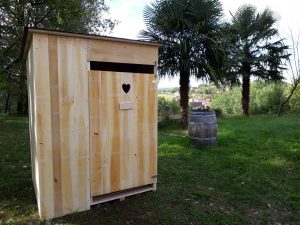
Cabane toilette sèche
Cette carte est intéressante, car elle permet de mettre en évidence, que les utilisateurs de toilettes sèches étaient plus nombreux (lors de l’enquête) dans le grand ouest de la France.
This map is interesting because it highlights that dry toilet users were more numerous (at the time of the survey) in the western part of France. Over 7 years have passed since this survey, and with dry toilets becoming more popular in France, this map may no longer be representative today.
Since very few studies and surveys are conducted on composting dry toilets, it’s difficult to know the actual number of dry toilet users in France and around the world.
It would be interesting to conduct a new survey to understand the evolution of dry toilet use in our country.
Management of Dry Toilet By-Products
Official regulations or recommendations for managing by-products also vary greatly from country to country. They range from simply burying or disposing of them (United States) to providing advice on composting (Finland). Some states limit their use to ornamental plants, while others allow use in vegetable gardens (Sweden). The use of dry toilets in France requires composting in closed and sealed containers placed on the ground.
Regulation of dry toilets varies significantly from one country to another. Some have strict regulations that leave little room for users, while others allow more flexible approaches.
Il faut que ça change !!!
One thing is certain, given the current state of our planet, water supply issues, and the awareness of many politicians, as well as a large part of the population worldwide, both outdoor and indoor dry toilets have a bright future ahead.
Source :
“Toilettes du Monde, Les toilettes sèches familiales. Etat de l’art, état des lieux dans plusieurs pays et propositions pour un accompagnement en France,” Oct 2010.
